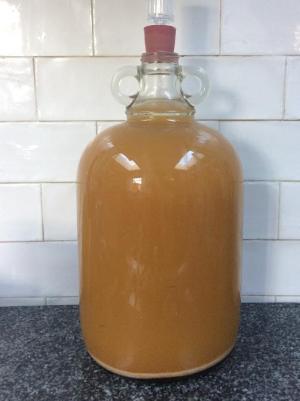
Not once have I ever uttered the line, “Waiter, can I have a glass of garlic wine please,” for a few reasons. The first is I am banned from our local Italian restaurant and secondly because it tastes horrible to drink. This is not a wine to drink but a wine to eat as a stock to risotto, mussels, meats or any other meal when white wine or dry vermouth would be added.
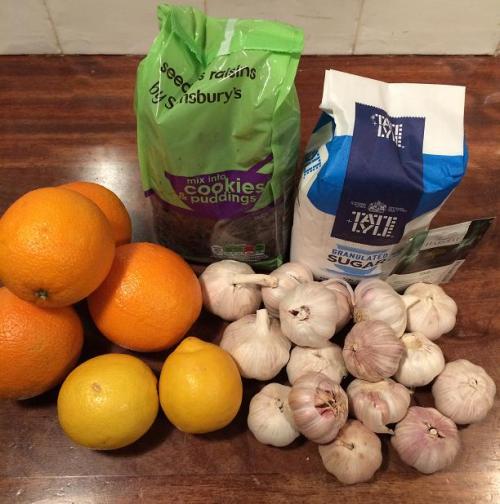
Before you start have a think about how much you need as 6 bottles of stock is a lot to make as an experiment, it also stinks for the first three days of fermentation and by “stinks” I mean it really really honks. This dies down as fermentation gets under way in primary and is eliminated by the time it enters secondary fermentation with an airlock. If you have sensitive family or a vampire staying over best leave it a few days before kicking it off!
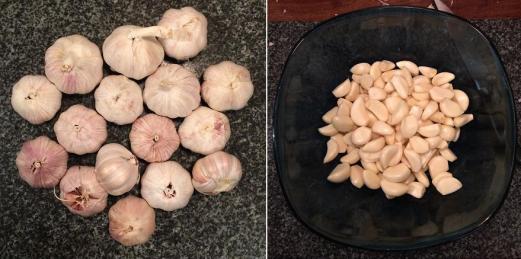
As this is a stock added for taste the measurement of the garlic is not really that exacting. I used 14 bulbs as they were small, others I have seen have used only 6 giant bulbs. The average is 12 regular bulbs as a guide. Pealing all of that will take eleventy billion years but the easiest way to do it is to press the full garlic bulb down so the skin cracks satisfyingly, then separate all the cloves apart and then start to slice to woody base off to peel. Once all the skin has been removed divide it in half with one set being baked and the other half thinly sliced.
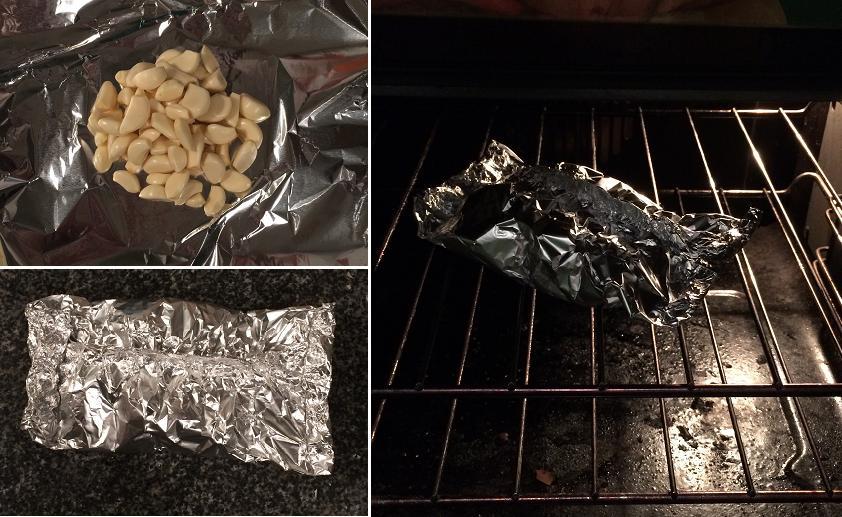
To roast the garlic pack it tightly into some foil and seal it with some tight folds then bake it for 20 minutes at 180° C / gas mark 7. For any Americans reading I’m sorry but I have no idea how you would gauge this but I imagine it is 3 cups of medium heat per quart of garlic time. The time is only approximate but when you open the foil it should be soft but not browned and it can be squished into a purée and dropped with the other sliced garlic.
Add to the garlic the lemon rind and chopped raisins and then boil for 15 minutes. The sugar will dissolve easiest when the water is warm so take the opportunity while you can.
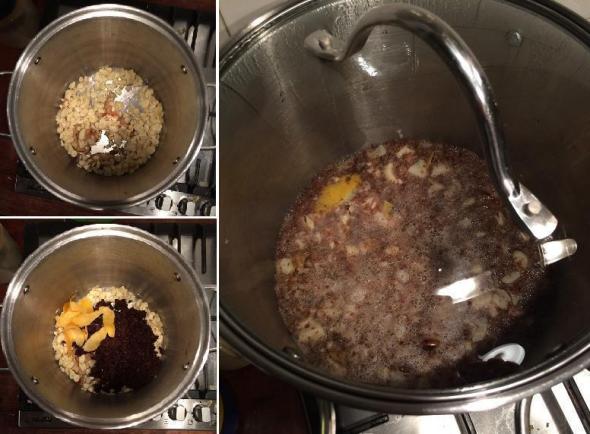
When it has totally cooled add the mug of strong tea, orange and lemon juice then stir the yeast and the nutrient in. I chose to primary ferment in a large demijohn but if you pan is big enough just leave it covered in it. The boiling will have sterilised everything nicely already so no laborious cleaning and sterilising of other containers.
Primary fermentation leads to a pungent garlic smell that permeates your house so be prepared. I got used to it but opening the door when coming home really knocked me back, this is only temporary so persist through it for a few days or hide it in a cellar, shed or the servants quarters if you can. As there is a lot of solids in the must this will all lift due to the carbon dioxide bubbling away from the fermenting yeast. Stir it at least twice a day and four if you can and pour the must through sterilised muslin into a secondary fermenter when it starts to slow. The remaining pulp can be squeezed though to extract as much flavour as possible.
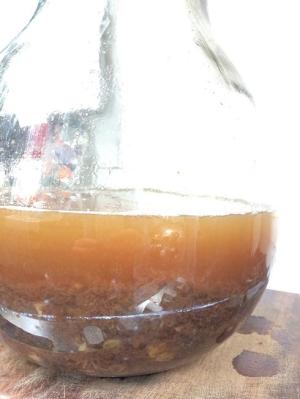
The raisins give a dark brown colour to the must but this will soften as particulates drop out during secondary fermentation. Pretend it is a rich butterscotch rather than a murky brown if you can. Racking should be done as usual at about 5 weeks and then 8 weeks after that but there is no long ageing process needed. The wine should be fermented to dryness so no need to back sweeten. When the wine is clear it is pretty much ready to use though some leave it a month for flavours to mellow and mix nicely but there is no reason why four months after starting you cannot be using it. While the wine will keep for a year or so it should be noted that it needs to be refrigerated once a bottle is opened. It should happily sit for a month as the 13% ABV will be a natural preservative. Because of this I am choosing to put it into capped beer bottles as they are smaller and more manageable.
There are no rules to when or how to use it simply add to your own desired taste and if any one has any particular recipes it can be added to I would certainly be interested to know!
.
GARLIC WINE – 4.5 litres
12 regularly garlic bulbs
500g raisins
2 lemons – juice and zest
3 oranges – juice only
1 cup of tea
4.5litres of water
1kg sugar
Wine nutrient
white wine yeast
1. Peel the garlic and divide roughly in half.
2. Roast half until softened but not browned and thinly slice the rest as it is in the oven.
3. Combine both and add the roughly chopped raisins and lemon peel then boil with 4.5 litres of water for 15 minutes
4. As it starts to cool stir in the sugar then once fully cooled add the cup of strong tea and juices pof the lemons and oranges, yeast and the nutrient.
5. Stir twice a day in primary fermentation in a covered container.
6. When fermentation starts to slow pour through sterlisied muslin into a demijohn and squeeze out as much flavour from the resulting pulp. Seal with an airlock and rack in 5 weeks or so when fermentation ends.
7. Rack every 2 months until there is no more sediment and bottle. Leave for an extra month if you desire.
Four months from pitch to… er… cook.
Interesting recipe, and some funny quips too!
LikeLiked by 1 person
I would roast half the full bulbs intact for better flavours. Do this in a closed vessel. A friend gave us one supposedly special for roasting garlic. I like the sound of this and have not previously seen a recipe. I shall add it to the list. Your bluebec is in before it. I shall use cheap wonky blueberries. May have to buy in batches and freeze which will obviously not be a problem.
LikeLike
Cheers. I may revisit it this year. Thanks!
LikeLike
Note that once roasted you just squeeze the garlic out of the skins. It will also reduce the labour of skinning half the bulbs.
LikeLike
For the smell I would use a 2G fermenting bin drill a hole for a bung and airlock and whack the lid on tight. Some shops sell lids predrilled and even fitted with bung and airlock.
LikeLike
I have just used a 30mm forstner bit to drill a hole which takes a standard cork or rubber bung. 29mm would be ideal, the bung goes a long way through the 30mm but it will not go all the way through.
LikeLike
For Americans reading this, the formula for converting Celsius to Fahrenheit is °F = 1.8•°C + 32. So 180°C = 356°F.
For British readers, the sarcasm factor is 1776. Not accounting for that may leave a certain aftertaste of unnecessary bitterness.
LikeLiked by 1 person
That’s 1776 CPS (Cups of Imperial Sarcasm per 3.32 inches ) but it converts to 1215 BSU (British Sarcasm Units) or 72sm (Sarcimetres)
LikeLiked by 1 person